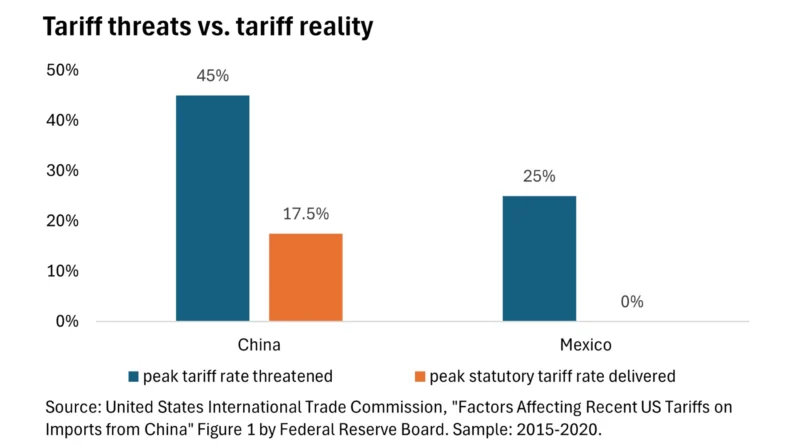Trump’s Tariffs: A New Chapter in Global Trade Wars
On August 7, heightened tariff rates imposed by President Donald Trump, varying from 10% to 50%, took effect on a variety of trade partners. This significant move was considered a critical examination of his approach to reduce US trade imbalances, attempting to avoid serious disruptions to global logistical networks, excessive inflation, and strong reprisals from trading associates.
After much uncertainty about the final tariff percentages, and a multitude of intense discussions with primary commerce partners aiming to diminish these, the United States Customs and Border Protection agency began gathering the augmented tariffs immediately past midnight, Eastern Time.
Goods already in transit towards US borders prior to this deadline could enter with the previously lower tariffs before October 5, as was stipulated by a CBP announcement to shippers in the past week. Formerly, imports from numerous nations were subject to a standard 10% import levy following a suspension of raised rates that Trump had originally announced in early April.
Nevertheless, there have been frequent amendments to Trump’s tariff strategy since these initial declarations. As a result, some countries have been subjected to considerably higher rates. Goods originating from Brazil now face a staggering 50% rate, while Swiss goods are subjected to 39%, Canadian goods 35%, and Indian goods are slapped with a 25% tariff.
In his declaration on August 6, Trump also disclosed an additional 25% tariff on Indian products, to be rolled out in 21 days. This move was a response to the South Asian country’s continued procurement of Russian oil, a fact President Trump pointed out just before the mentioned deadline.
Significant trade associates accounting for approximately 40% of US trade volumes have established preliminary agreements for trade and investment compromises with Trump. These key partners include the likes of the European Union, Japan, and South Korea, lowering their base tariff rates to a manageable 15%.
Britain managed to secure a 10% tariff rate, a triumph for the island nation. Other Asian countries, such as Vietnam, Indonesia, Pakistan, and the Philippines were successful in locking down tariff reductions to 19% or 20%. On the other hand, countries hit with high tariffs, including India and Canada, are still urgently trying to negotiate better deals.
Trump’s instructions have specified that any imports deemed to have been transhipped via a third-party country to elude the escalating US tariffs will be subjected to a supplemental 40% import levy. His administration, however, has been scant on the details of how these goods are to be identified, or how this clause will be put into action.
Trump’s new series of worldwide tariffs are prompting considerable economic reconfigurations. The winners and losers of this global tariff battlefield are slowly surfacing. On July 31, Trump imparted tariffs over 10% on 67 trade associates, while maintaining the rate at 10% for unnamed ones.
These import taxes play a substantial role in Trump’s multi-tiered tariff strategy, which encompasses national security-oriented sectoral tariffs on semiconductors, pharmaceuticals, autos, steel, aluminum, copper, lumber, and various other goods. Speaking on August 6, Trump indicated that duties applied to microchip imports might be hoiked up to 100%.
China’s tariff trajectory is independent and faces a possible tariff escalation on August 12 if Trump does not validate an extension of a prior ceasefire after discussions conducted the previous week in Sweden. In an effort to persuade Moscow to put an end to the ongoing conflict in Ukraine, he suggested that he may levy extra tariffs on China’s purchases of Russian oil.
Trump has proven vocal, lauding the monumental surge in federal earnings attributable to his import tax propositions. Ultimately paid by goods-importing companies and end product consumers, the greatly increased rates will inflate the total tax collected. The tariff amount reached a staggering $27 billion in June, breaking previous records.
The U.S. Treasury Secretary has projected that U.S. tariff incomes could surpass a whopping $300 billion annually. Consequently, the average U.S. tariff rates would surge to about 20%, representing century-old highs and leaping from the remarkably low 2.5% prevalent when Trump entered office in January.
Data released the past week by the Commerce Department provides further proof of increasing U.S. prices precipitated by tariffs, starting from June. This includes costs of home furnishings, durable household equipment, recreational goods, and automobiles. The expenses associated with President Trump’s tariff war are gradually piling up for numerous companies.
Global companies that have presented their quarter earnings so far are bracing for a blow of approximately $15 billion to their anticipated profits in 2025. A daunting forecast for those operating in the international commerce arena, the aftereffects of President Trump’s tariff maneuvers could echo for years to come.



